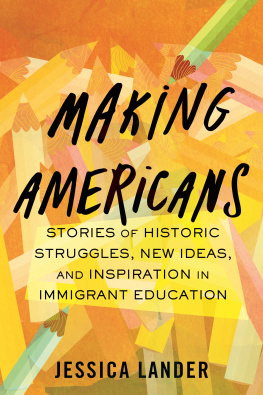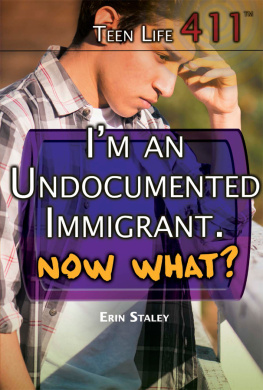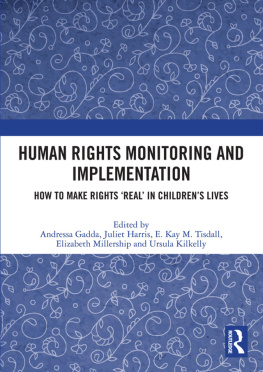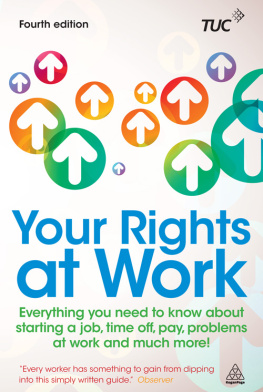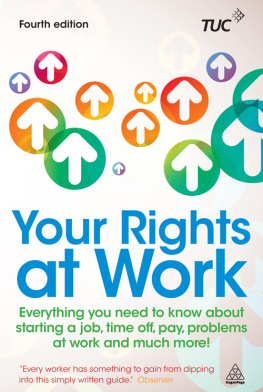Els de Graauw - Making Immigrant Rights Real
Here you can read online Els de Graauw - Making Immigrant Rights Real full text of the book (entire story) in english for free. Download pdf and epub, get meaning, cover and reviews about this ebook. year: 2016, publisher: Cornell University Press, genre: Politics. Description of the work, (preface) as well as reviews are available. Best literature library LitArk.com created for fans of good reading and offers a wide selection of genres:
Romance novel
Science fiction
Adventure
Detective
Science
History
Home and family
Prose
Art
Politics
Computer
Non-fiction
Religion
Business
Children
Humor
Choose a favorite category and find really read worthwhile books. Enjoy immersion in the world of imagination, feel the emotions of the characters or learn something new for yourself, make an fascinating discovery.

- Book:Making Immigrant Rights Real
- Author:
- Publisher:Cornell University Press
- Genre:
- Year:2016
- Rating:3 / 5
- Favourites:Add to favourites
- Your mark:
- 60
- 1
- 2
- 3
- 4
- 5
Making Immigrant Rights Real: summary, description and annotation
We offer to read an annotation, description, summary or preface (depends on what the author of the book "Making Immigrant Rights Real" wrote himself). If you haven't found the necessary information about the book — write in the comments, we will try to find it.
Making Immigrant Rights Real — read online for free the complete book (whole text) full work
Below is the text of the book, divided by pages. System saving the place of the last page read, allows you to conveniently read the book "Making Immigrant Rights Real" online for free, without having to search again every time where you left off. Put a bookmark, and you can go to the page where you finished reading at any time.
Font size:
Interval:
Bookmark:

| AFL | American Federation of Labor |
| AFL-CIO | American Federation of LaborCongress of Industrial Organizations |
| ALDI | Alianza Latinoamericana por los Derechos de los Inmigrantes |
| CAA | Chinese for Affirmative Action |
| CBP | California Budget Project |
| CPA | Chinese Progressive Association |
| DABSA | Dymally-Alatorre Bilingual Services Act |
| DACA | Deferred Action for Childhood Arrivals |
| DAPA | Deferred Action for Parents of Americans and Lawful Permanent Residents |
| DCCC | San Francisco Democratic County Central Committee |
| DLSE | California Division of Labor Standards Enforcement |
| EASO | Equal Access to Services Ordinance |
| HERE | Hotel Employees and Restaurant Employees Union |
| ICE | U.S. Immigration and Customs Enforcement |
| INS | U.S. Immigration and Naturalization Service |
| IRC | San Francisco Immigrant Rights Commission |
| IRS | U.S. Internal Revenue Service |
| MCO | Minimum Compensation Ordinance |
| MWIEO | Minimum Wage Implementation and Enforcement Ordinance |
| MWO | Minimum Wage Ordinance |
| NCCIR | Northern California Coalition for Immigrant Rights |
| OCEIA | San Francisco Office of Civic Engagement and Immigrant Affairs |
| OLSE | San Francisco Office of Labor Standards Enforcement |
| POWER | People Organized to Win Employment Rights |
| SEIU | Service Employees International Union |
| SFLC | San Francisco Labor Council |
| SFO | San Francisco International Airport |
| SSA | U.S. Social Security Administration |
| UFCW | United Food and Commercial Workers Union |
| ULA | Unidad Latina en Accin |
| UNITE | Union of Needletrades, Industrial, and Textile Employees |
| YWU | Young Workers United |
Font size:
Interval:
Bookmark:
Similar books «Making Immigrant Rights Real»
Look at similar books to Making Immigrant Rights Real. We have selected literature similar in name and meaning in the hope of providing readers with more options to find new, interesting, not yet read works.
Discussion, reviews of the book Making Immigrant Rights Real and just readers' own opinions. Leave your comments, write what you think about the work, its meaning or the main characters. Specify what exactly you liked and what you didn't like, and why you think so.

